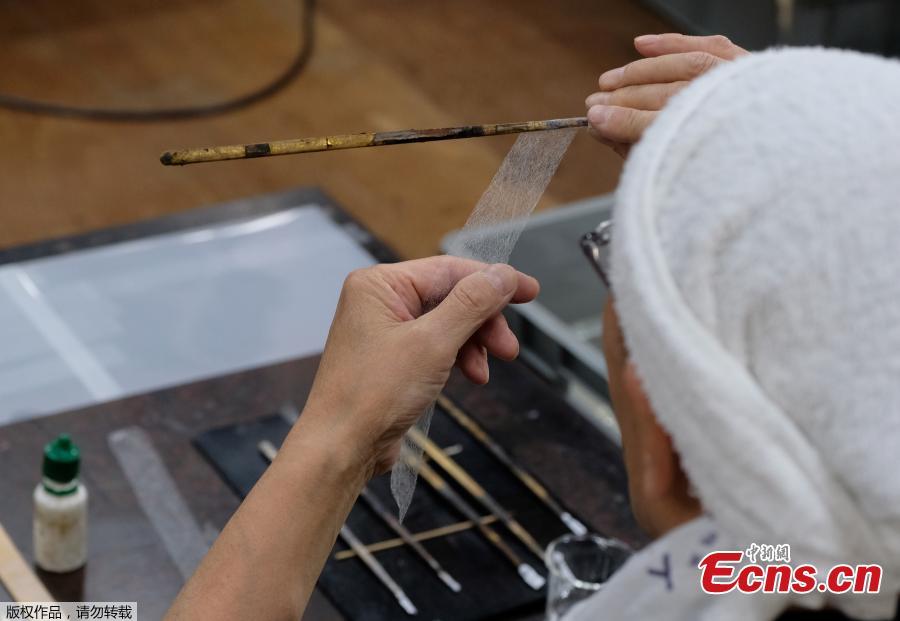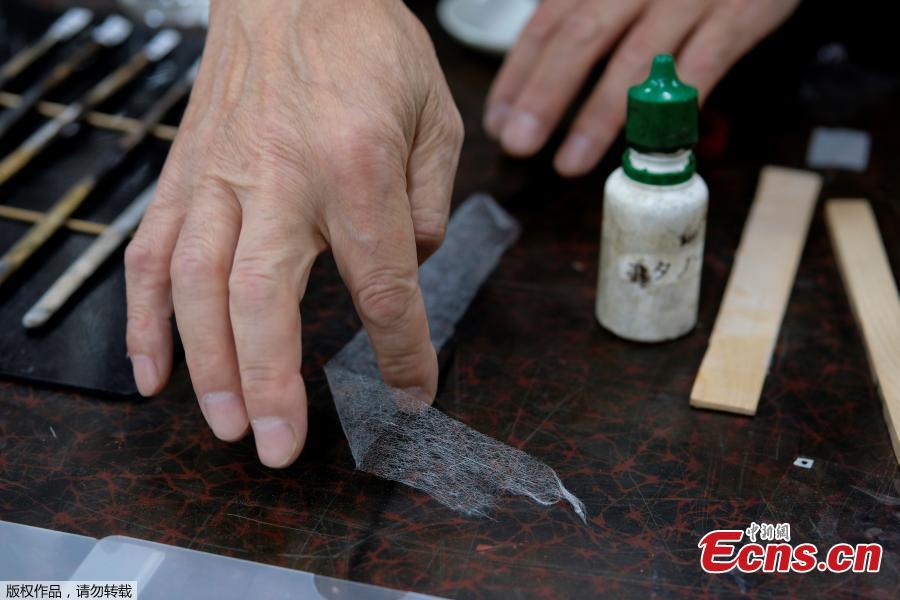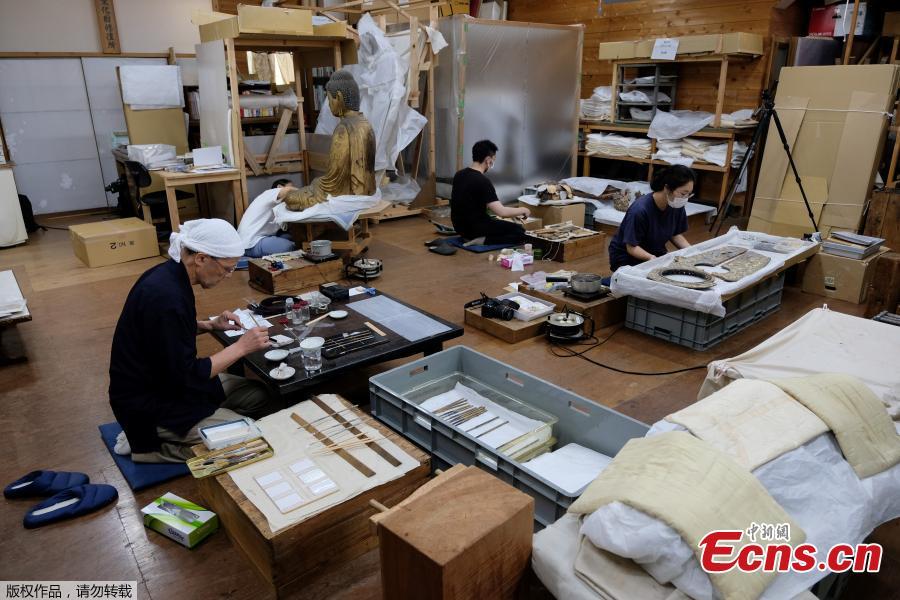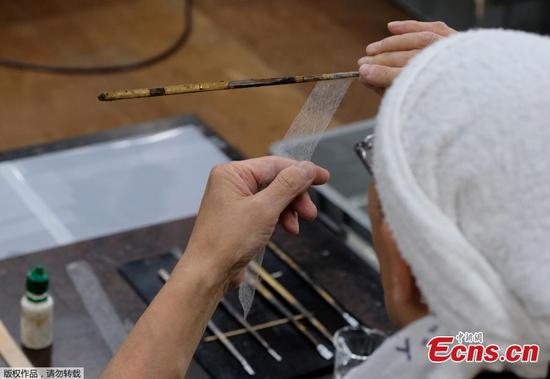
This picture taken on June 4, 2019 shows Takao Makino, head of the Kibi conservation studio, carefully applying "washi" onto a brush onto golden sticks representing the halo of a Buddhist statue estimated to be around 800 years old, in Saitama, outside Tokyo. Once indispensible for the daily life of Japanese, washi-literally "Japanese paper" -was used not only for writing and painting but also for sliding doors, room dividers, lampshades and umbrellas. (Photo/Agencies)

This picture taken on June 4, 2019 shows a piece of the world's thinnest "washi" paper used to repair cultural properties in Saitama, outside Tokyo. Once indispensible for the daily life of Japanese, washi-literally "Japanese paper" - was used not only for writing and painting but also for sliding doors, room dividers, lampshades and umbrellas. (Photo/Agencies)

This picture taken on June 4, 2019 shows Takao Makino (L), head of Kibi conservation studio, repairing cultural property in Saitama, outside Tokyo. Once indispensible for the daily life of Japanese, washi - literally "Japanese paper"- was used not only for writing and painting but also for sliding doors, room dividers, lampshades and umbrellas.(Photo/Agencies)























